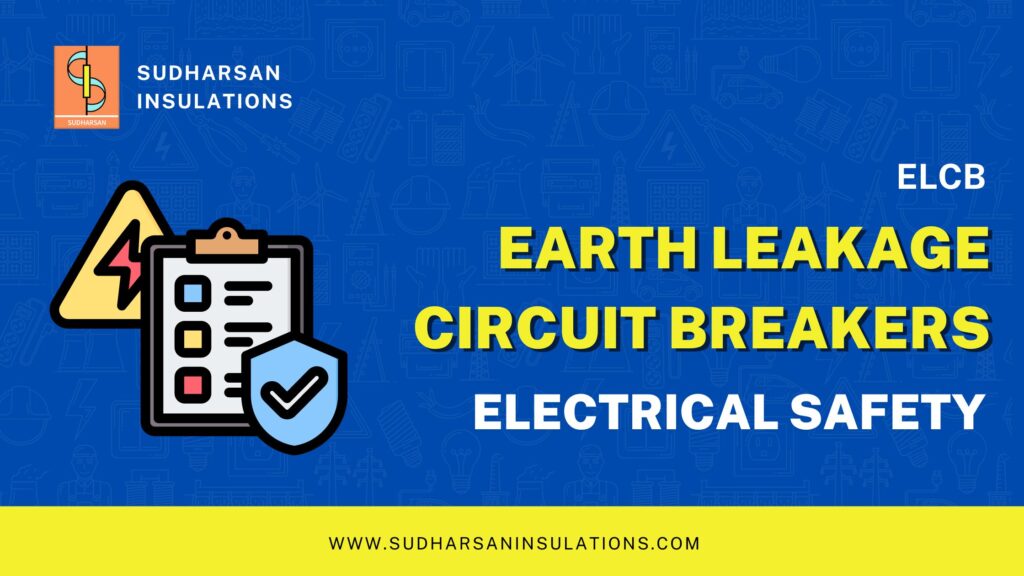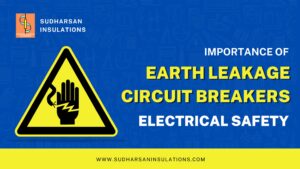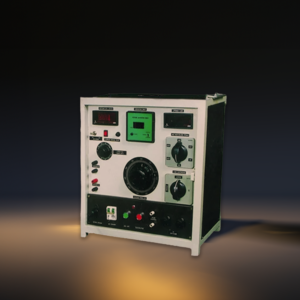What is an ELCB | How Earth Leakage Circuit Breaker Works
Last Updated : March 27, 2024

Earth Leakage Circuit Breakers (ELCB)
Earth leakage circuit breakers (ELCB) are designed to provide protection against electrical shocks and fires resulting from ground faults or leakage currents. These devices continuously monitor the electrical system and automatically interrupt the power supply when a dangerous leakage of current is detected, preventing potential hazards caused by short circuits or overloads within the control panel.
What is ELCB and Why is it Crucial for Electrical Safety?
Electrical safety should always be a top priority, whether in residential or commercial settings. One crucial device that ensures protection against electrical shocks and fires is the Earth Leakage Circuit Breaker (ELCB). Understanding what an ELCB is and how it works can quite literally be a lifesaver. An ELCB, also known as an Earth Leakage Circuit Breaker or ELCB circuit breaker, is a safety device that monitors the electrical current flowing through a circuit. It automatically disconnects the power supply when it detects even a small leakage of current to earth, preventing potential electrocution or electrical fires.
What is the Purpose of ELCB
The primary purpose of an Earth Leakage Circuit Breaker (ELCB) is to protect against electric shocks and electrical fires caused by ground faults or leakage currents. Specifically, an ELCB serves the following purposes:
Personal safety: ELCBs are designed to detect any leakage of current to the ground, which can occur due to faulty insulation, damaged wiring, or contact with conductive surfaces. When a leakage current exceeds a predetermined safe level, the ELCB trips and cuts off the power supply, preventing potentially fatal electric shocks to individuals.
Fire prevention: In the event of a ground fault or leakage current, electricity may find an alternative path through combustible materials, leading to overheating and potential electrical fires. By promptly disconnecting the power supply, ELCBs help mitigate the risk of fires caused by such leakage currents.
Equipment protection: Leakage currents can also damage electrical equipment and appliances over time. ELCBs help protect these devices by disconnecting the power supply when a leakage current is detected, preventing further damage or malfunctions.
Compliance with safety regulations: In many countries and regions, the installation of ELCBs is mandated by electrical safety codes and regulations, particularly in residential, commercial, and industrial settings, to ensure a safe and reliable electrical system.
How Does an ELCB Work?
The basic principle behind an ELCB is quite simple. It measures the current flowing through the live and neutral wires of a circuit. In a properly functioning system, these currents should be equal. However, if there is a leakage of current to earth due to a fault, the ELCB detects the imbalance and immediately trips, cutting off the power supply.
When is an ELCB Required?
The use of ELCBs is mandatory in certain areas and applications to ensure electrical safety. Some common scenarios where earth leakage circuit breakers are required include:
Residential areas: Kitchens, bathrooms, outdoor sockets, and other high-risk areas.
Commercial and industrial settings: Construction sites, workshops, and places with high moisture levels.
Locations with temporary or frequently changing electrical installations. Most electrical codes and regulations, such as the National Electrical Code (NEC) in the United States, mandate the use of ELCBs in these situations to protect against potential electric shocks and fires.
ELCB Types and Ratings
ELCBs are available in various types and ratings to suit different applications and environments. Here are some common classifications:
Voltage Ratings
ELCBs are designed for specific voltage levels, such as 120V, 240V, or 440V systems.
Current Ratings
The current rating of an ELCB indicates the maximum current it can handle safely. Common ratings include:
- 30mA: Suitable for residential and general-purpose applications.
- 100mA: Used in commercial and industrial settings with larger loads.
- 300mA: Typically used in highly inductive or harsh environments.
ELCB Classes
AC ELCBs: Designed for AC (Alternating Current) systems.
AC/DC ELCBs: Suitable for both AC and DC (Direct Current) systems.
Pure DC ELCBs: Specifically for DC applications, such as photovoltaic systems.
Selecting the appropriate ELCB type and rating is crucial to ensure proper protection and avoid nuisance tripping.
Proper Installation of ELCBs
To ensure the effective functioning of an ELCB, it is essential to follow the manufacturer’s guidelines for installation. Here are some key considerations:
Location: ELCBs should be installed at the main distribution board or as close to the load as possible, following the required separation distances.
Environment: ELCBs should be installed in dry, well-ventilated locations, away from excessive heat, moisture, or corrosive environments.
Wire Sizing: Proper wire sizing and ELCB load calculations must be performed to ensure the ELCB can handle the maximum current demand.
Grounding: Proper grounding and bonding of the electrical system are crucial for the ELCB to function correctly.
It is highly recommended to have a qualified electrician handle the installation and configuration of ELCBs to ensure compliance with local electrical codes and regulations.
Maintenance and Testing ELCBs
Regular maintenance and testing of ELCBs are essential to ensure their continued operation and effectiveness. Here are some best practices:
Testing Schedule
ELCBs should be tested at least once a month or as per the manufacturer’s recommendations.
Testing Procedure
- Locate the “Test” button on the ELCB.
- Press and hold the “Test” button.
- The ELCB should trip and disconnect the power supply.
- If the ELCB fails to trip, it may be defective and should be replaced.
Resetting
After testing, reset the ELCB by switching it back to the “ON” position
Replacement
If an ELCB fails multiple tests or shows signs of damage, it should be replaced immediately.
Proper maintenance and testing can help identify potential issues before they become hazardous and ensure the continued protection provided by ELCBs.
Advantages of Using ELCBs
Incorporating ELCBs into electrical systems offers numerous advantages, including:
Shock and Electrocution Prevention: ELCBs are designed to protect against electric shocks and electrocutions by quickly disconnecting the power supply in the event of a leakage current.
Fire Prevention: By detecting and mitigating earth leakage currents, ELCBs can prevent electrical fires caused by faults or short circuits.
Improved Safety: ELCBs provide an additional layer of protection beyond standard circuit breakers, ensuring a higher level of electrical safety.
Cost-Effectiveness: While the initial investment in ELCBs may be higher, they can prevent costly electrical accidents, equipment damage, and potential legal liabilities.
Compared to other protective devices like Residual Current Devices (RCDs) or Residual Current Circuit Breakers (RCCBs), ELCBs offer superior protection against earth leakage currents and are more suitable for certain applications.
Limitations and Potential Issues
While ELCBs are highly effective safety devices, it is essential to be aware of their limitations and potential issues:
Nuisance Tripping: ELCBs can sometimes trip unexpectedly due to factors such as electrical noise, transient currents, or equipment with high inrush currents.
Not Fail-Safe: ELCBs are not fail-safe devices and require regular testing and maintenance to ensure proper operation.
Compatibility Issues: Some equipment or electrical installations may not be compatible with ELCBs, leading to frequent tripping or improper functioning.
Electrical Noise and Interference: High levels of electrical noise or interference can affect the performance of ELCBs and cause false tripping.
To mitigate these issues, it is crucial to select the appropriate ELCB type and rating, follow proper installation practices, and regularly maintain and test the devices.
Choosing the Right ELCB
Selecting the right ELCB for your application is essential to ensure optimal performance and safety. Here are some factors to consider:
Location and Environment: Consider the specific location and environment where the ELCB will be installed, such as residential, commercial, or industrial settings, as well as any potential exposure to moisture, dust, or vibrations.
Load Characteristics: Evaluate the electrical loads that will be connected to the ELCB, including their power ratings, inrush currents, and any potential sources of electrical noise or interference.
Voltage and Current Requirements: Ensure that the ELCB’s voltage and current ratings match the electrical system’s specifications.
Compliance and Certifications: Choose ELCBs that are approved and listed by recognized testing agencies, such as UL or CSA, to ensure compliance with local electrical codes and regulations.
Some popular residential and commercial ELCB models include
Residential: Schneider Electric, Siemens, ABB, and Eaton are well-known brands offering a range of ELCBs suitable for residential applications.
Commercial: Brands like Square D, Cutler-Hammer, and General Electric offer robust ELCBs designed for commercial and industrial environments.
It is always recommended to consult with a qualified electrician or refer to the manufacturer’s guidelines to select the most appropriate ELCB for your specific needs.
Conclusion
Earth Leakage Circuit Breakers (ELCBs) play a crucial role in ensuring electrical safety by protecting against electric shocks, electrocutions, and electrical fires. Understanding how ELCBs work, their types and ratings, and the proper installation and maintenance procedures is essential for homeowners, contractors, and facility managers alike.
While ELCBs offer numerous advantages, it is crucial to address their limitations and potential issues by selecting the right ELCB for your application, following proper installation practices, and conducting regular testing and maintenance.
Remember, electrical safety should never be compromised. Consulting with a qualified electrician and adhering to local electrical codes and regulations is highly recommended when installing or working with ELCBs.
By prioritizing electrical safety and incorporating ELCBs into your electrical systems, you can enjoy peace of mind knowing that you’ve taken the necessary steps to protect lives and property from the potential dangers of electrical faults.
Other Products from Sudharsan Insulation are
High Voltage Kits, Loading Transformers, Primary Current Injection Test Kit, Secondary Injection Kits, MCCB Kits, RCCB Kits.




